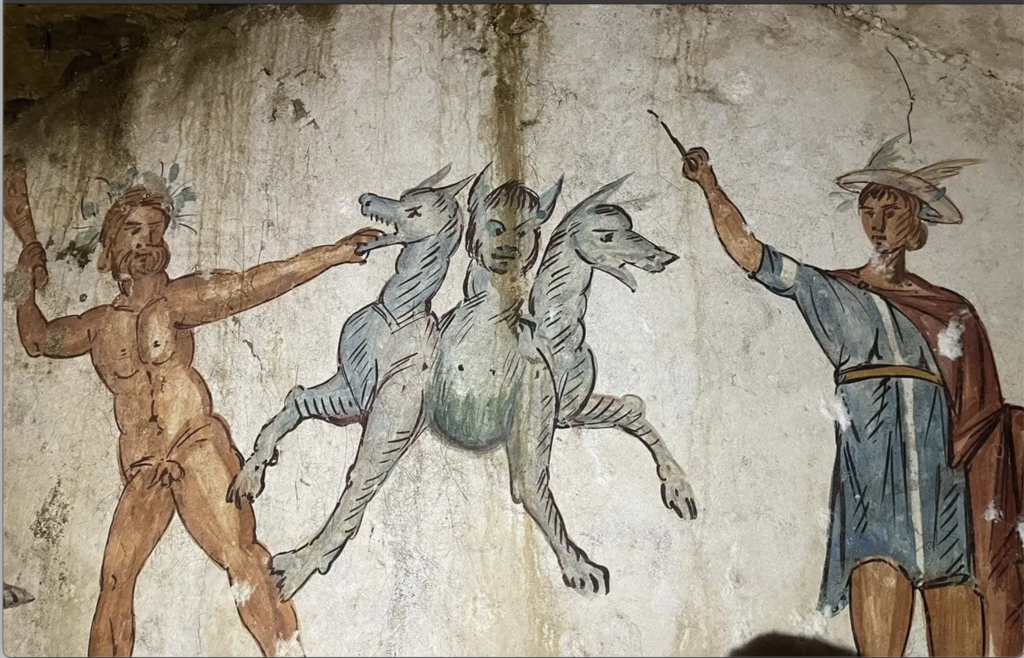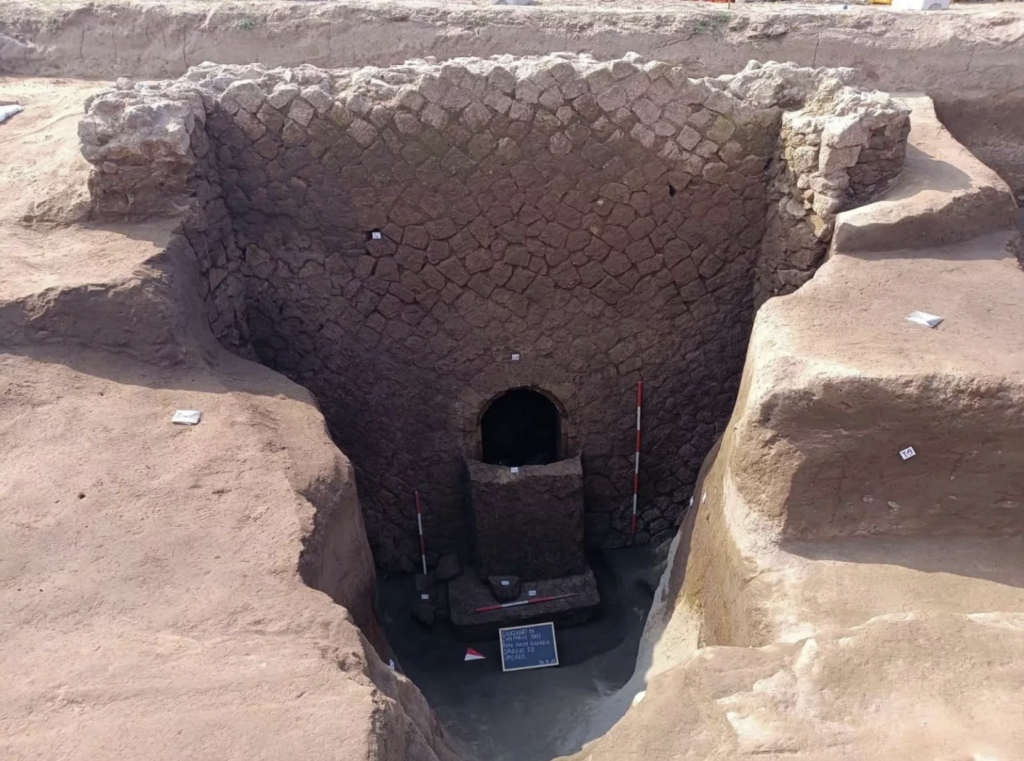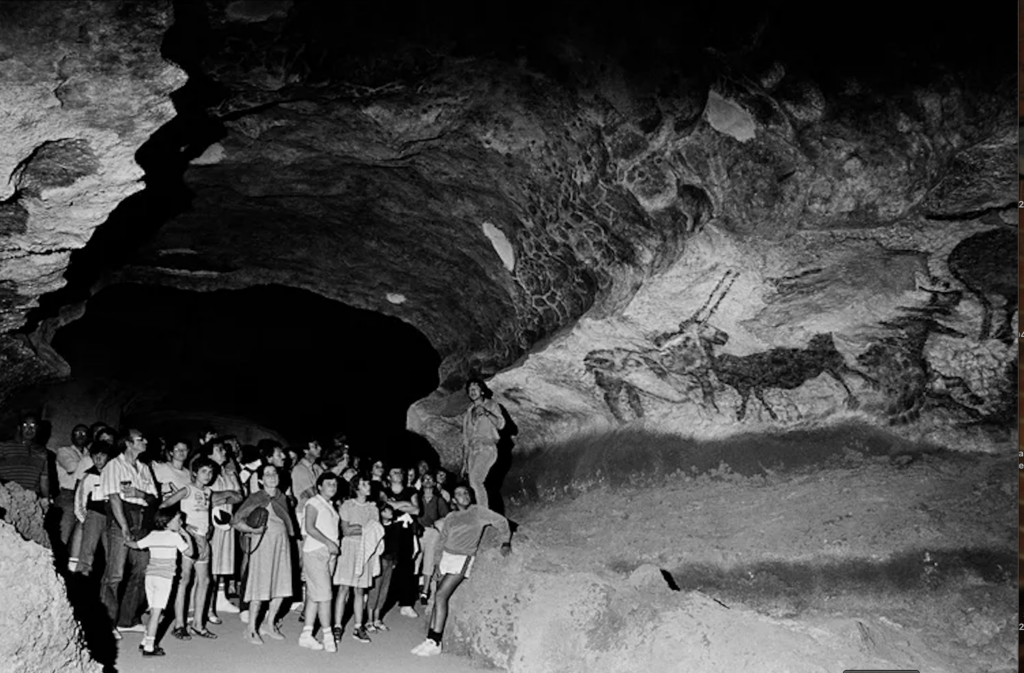The Etruscan civilization existed in Italy between the 8th and 3rd century. This civilization was significant not only for its influence on the development of ancient Roman art and culture but for the Italian Renaissance as well. The Etruscans were the first “superpower” of the Western Mediterranean and developed some of the earliest flourishing cities in Europe. Some of the most important cities in modern Tuscany (Florence, Pisa, and Siena) were originally established by the Etruscans and have been inhabited since then. The Etruscans dominated Italy until their demise in the Roman-Etruscan wars to the Roman Empire in the 4th century B.C.
On October 27th, in the municipality of Giugliano in Campania, Italy, a tomb from the Etruscan civilization was discovered, having been hidden for approximately 2,600 years. Sealed and blocked by multiple slabs of stone, the interior of the tomb, a double chamber dug into the rock, was found by archaeologists to hold numerous artifacts, including a collection of pottery and amphorae, the jars likely having contained wine from the island of Chios, Greece. Utensils, cups, and numerous pieces of ceramic were also found inside the tomb, as was a tablecloth that may have been used for a funerary ritual offering called the “meal of the dead.” The amount of valuable items found within the tomb suggests that the person to whom it was made was either extraordinarily wealthy or of extreme importance, though their identity has yet to be uncovered.

What made this extraordinary find particularly important to archaeologists and historians was the amount of Greek influence present in this Italian tomb. One example of this is the Greek wine found in the tomb, highlighting the importance of the wine trade of the time. A more substantial example is the amount of Greek mythological figures that littered the interior of the tomb, such as the vast depiction of Cerberus, the giant three-headed dog noted for its serpent tail and snakes growing out of its back; it is said that the job of this being was to guard the gates of the underworld both from escaping spirits and the invading living. The scene depicts Hercules arriving at Hades to capture Cerberus, in addition to ichthyocentaurs, creatures that have human upper bodies, lower bodies of horses, and fish tails.

Though it is at the moment unknown, archaeologists expect to be able to use further excavations of the site to find critical information about ancient Vulci, as much of the literary and historical texts from the civilization have been lost or destroyed. The language itself is only partially understood today. The architecture of the tomb, along with the discovered artifacts, provide valuable historical insights into life in Vulci as well as the lifestyle of its aristocracy at the civilization’s zenith.

The entrance to the tomb when it was unearthed during archaeological surveys in southern Italy.
Works Cited
Killgrove, Kristina. “Mythical Hellhound and Sea-Centaurs Painted on 2,200-Year-Old Tomb Discovered in Italy.” LiveScience, Purch, 14 Oct. 2023, www.livescience.com/archaeology/roman/mythical-hellhound-and-sea-centaurs-painted-on-2200-year-old-tomb-discovered-in-italy.
Georgiou, Aristos. “Archaeologists Open Tomb Untouched for 2,600 Years.” Newsweek, Newsweek, 1 Nov. 2023, www.newsweek.com/archaeologists-open-tomb-untouched-2600-years-1839973.
Saraceni, Jessica Esther. “2,000-Year-Old Tomb Discovered in Southern Italy.” Archaeology Magazine, www.archaeology.org/news/11832-231013-italy-cerberus-tomb. Accessed 5 Nov. 2023.
Additional Sources
https://www.ancient-origins.net/news-history-archaeology/etruscan-tomb-vulci-0019717

